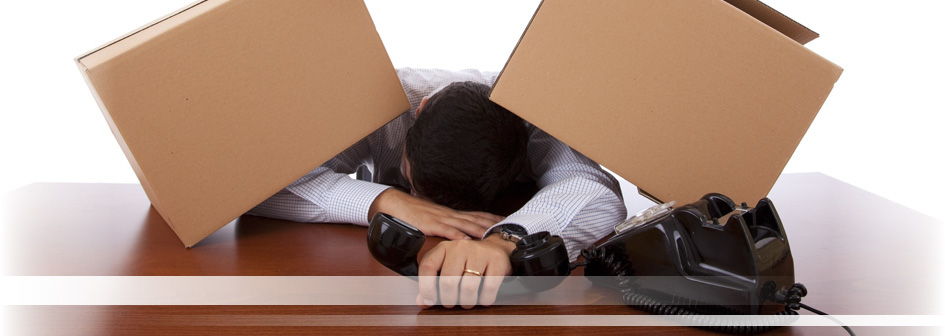The Art of Storing an Unused Freezer Correctly
Posted on 04/06/2025
The Art of Storing an Unused Freezer Correctly
Are you wondering what to do with that unused freezer taking up space in your basement or garage? Properly storing a freezer--whether for the short or long term--is more than just unplugging it. Storing a freezer correctly ensures it lasts longer, prevents mold, bad odors, and mechanical issues, and prepares it for its next use. In this comprehensive guide, we'll share everything you need to know about the art of storing an unused freezer--the why, the how, and everything in between.
Why Correctly Storing an Unused Freezer Matters
Many people underestimate the importance of properly storing a freezer when it's not in use. Neglecting the right steps can lead to:
- Mold and mildew buildup inside the freezer cavity
- Development of foul odors that are hard to remove
- Rust and corrosion on interior and exterior components
- Damage to electrical components or insulation
- Infestation by pests or insects
- Diminished performance and a shortened freezer lifespan
Understanding the art of freezer storage can save you money and hassle, ensuring your appliance is ready when you need it again.

Preparation: Cleaning Before Storage
1. Unplug and Defrost the Freezer
Before you even think about storing your unused freezer, make sure to unplug it. To prevent water damage, allow the freezer to defrost completely. This process can take several hours or even overnight, depending on the size of your freezer.
- Remove all items from the freezer.
- Unplug from the power source.
- Prop the door open to speed up defrosting.
- Place towels around the base to absorb melting ice.
Tip: Never use sharp objects to chip away ice as it can puncture the lining and damage coolant lines.
2. Deep Clean Inside and Out
Once all the ice has melted, it's time for a thorough scrub. Cleaning your freezer before storage removes food residue, helps control odors, and prevents mold growth. Here's how:
- Mix a mild cleaning solution: A mix of warm water and baking soda (about 2 tablespoons of baking soda per quart of water) is both effective and safe.
- Wipe all surfaces: Clean the interior - shelves, bins, walls - and don't forget the rubber gasket around the door.
- Clean the exterior: Wipe down the outside, paying special attention to vents and coils at the back or underneath.
- Dry thoroughly: Let all surfaces air dry completely to prevent moisture buildup.
Pro Tip: Leave the freezer door open for several hours after cleaning to ensure all moisture has evaporated.
How to Prevent Odors and Mold in an Unused Freezer
Even after cleaning, freezers can develop nasty odors or mold when sealed up. To prevent freezer odors during storage, consider these extra precautionary steps:
- Leave the door ajar: Use a small object (like a rolled-up towel or wedge) to keep the door propped open an inch or two. This allows air circulation, which is crucial.
- Add an odor absorber: Place a box of baking soda, a few charcoal briquettes (in a container), or a moisture absorber to combat humidity and odors.
Do not seal an unused freezer tightly shut unless you are absolutely certain it is 100% dry and only storing it for a very short time.
Choosing the Right Location for Storage
Where Should You Store an Unused Freezer?
Your choice of freezer storage location greatly affects its condition. Here are the main options:
- Basement: Cool and generally dry, basements are often the ideal spot, provided there's no water leakage.
- Garage: This is common, but check temperature extremes - exposure to heat or cold can damage the freezer.
- Storage unit: Opt for a climate-controlled unit if storing your freezer for months.
- Porch/Shed/Outdoor spaces: This is not recommended due to exposure to weather and pests.
Environmental Factors to Consider
- Humidity: High humidity can cause rust and encourage mold. Use a dehumidifier or silica gel packs if needed.
- Temperature: Avoid locations that routinely drop below freezing or exceed 100?F (38?C). Extreme temperature swings can stress seals and create moisture inside the appliance.
- Pest control: Check for signs of rodents or insects and address infestations before placing your freezer in the area.
- Elevation: Elevate the freezer on blocks if the storage area is susceptible to flooding or dampness.
How to Store Your Freezer for Short and Long-Term
Short-Term Storage (Up to 3 months)
- Turn the freezer off and defrost as described above.
- Clean and dry it thoroughly.
- Keep it unplugged and prop the door ajar.
- If space is tight, you can wrap the power cord around the handle and secure loose parts.
- Check occasionally for signs of moisture or mold.
Long-Term Storage (Over 3 months)
- Keep the freezer upright: Laying it on its side may cause oil or coolant to shift in the compressor, leading to mechanical problems when plugged in again.
- Protect from dust and debris: Drape a breathable cloth or fitted cover over the freezer, but avoid plastic wraps, which can trap moisture.
- Ventilation: Maintain airflow around the appliance by not pushing it flat against a wall.
- Inspect periodically: Open the door and check for signs of moisture, rust, or pests every couple of months.
- Do not stack heavy items: Placing boxes atop the freezer can damage the lid or door.
How to Store a Freezer Outside (If You Have No Choice)
Storing a freezer outdoors is generally discouraged. However, if you must, follow these crucial steps:
- Choose a shaded location away from direct sunlight.
- Raise the freezer on pallets to prevent contact with standing water.
- Cover only with a breathable outdoor appliance cover--never use a tarp directly on the appliance.
- Use insect and rodent repellents in the surrounding area.
- Open and inspect regularly for rust, water entry, and animal signs.
Note: Outdoor storage is only a short-term solution and may void some manufacturer warranties.
Readying Your Freezer for Future Use
When the time comes to use your freezer again, a few simple steps will help ensure it works safely and efficiently:
- Inspect for damage: Look for signs of rust, rodents, or frayed wires.
- Clean again: Wipe out any dust or new debris. Disinfect lightly if it's been in storage for a long time.
- Allow to settle upright: If the freezer has been on its side during transport, let it stand upright at least 24 hours before plugging in. This allows compressor oil to return to its proper place.
- Plug in and test: Once powered up, check that temperatures are dropping and listen for any unusual noises.
Common Questions About Storing a Freezer When Not in Use
Should I store my freezer with the door closed?
It's generally best to store your unused freezer with the door slightly open. This prevents musty odors and mold. Use a towel, block, or even a child's safety lock to keep the door from fully sealing.
Can I lay a freezer on its back or side for storage?
Upright storage is best. If you must lay the freezer down, do so for as short a time as possible, and always allow the unit to stand upright for at least 24 hours before use.
Is it OK to keep the freezer plugged in while not using it?
This depends on your intentions and how long the freezer will sit unused. If it's only for a few days, keeping it plugged in prevents defrosting. For anything longer, it's more efficient--and safer--to unplug, defrost, and clean it.
What is the best way to prevent smells in my stored freezer?
Clean thoroughly, keep the door propped open, and use a baking soda box or other odor absorber inside. For long-term storage, check periodically and repeat cleaning as needed.
Tips to Prolong the Life of Your Unused Freezer
- Store it in a dry, temperature-stable location.
- Keep the door slightly open and clean inside regularly.
- Use odor and moisture absorbers as preventive measures.
- Cover with a breathable fabric cover, never plastic.
- Inspect every couple of months, especially if in a garage or storage unit.

Takeaways: Mastering the Art of Storing an Unused Freezer Correctly
The art of storing an unused freezer goes beyond the basics. By investing a little time and care, you'll ensure your freezer remains fresh, functional, and ready to go when you need it most. Whether you're preparing for a home renovation, upsizing, downsizing, or just giving your appliance a break, use these tips and techniques to guarantee optimal freezer longevity and performance.
Remember: Freezer storage done right prevents costly repairs, keeps odors and pests at bay, and preserves the investment you've made in your appliance. Now that you're armed with this in-depth guide, you're ready to handle the task like a true pro.
Further Reading on Appliance Storage
- How to Care For Your Freezer - Consumer Reports
- Freezer Tips for Energy Efficiency - Energy.gov
- Step-by-Step Freezer Cleaning Guide - HGTV
Your freezer can serve you well for many years--when you master the art of storing it correctly.








